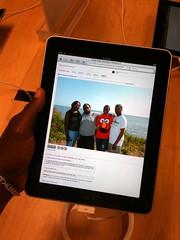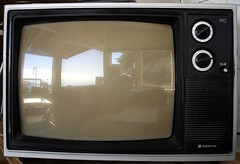 There. I’ve said it. I like Reality TV. Alright, I’ve actually said it before.
There. I’ve said it. I like Reality TV. Alright, I’ve actually said it before.
It shouldn’t be a shocking thing to say though, should it? Just like any genre has its good shows and bad shows, liking the genre shouldn’t commit you to liking the bad shows.
Admittedly, Reality TV is full of bad shows. I am not a fan of The Farmer Wants a Wife or The Bachelor. And looking back at the grand-daddies of Reality TV – Big Brother and Survivor – who have been with us for about a decade now, I’m not a fan of them either.
However, I do like some Reality TV. There are basically three principles that work for me:
- The participants should be there because of real talent.
- The judges/hosts should be supportive of the participants.
- The outcome of the show should not depend on audience votes.
When I look at the Reality TV shows that work for me, there’s not actually a great deal of difference from the “game shows” that I watched on TV when I was a kid, with the exception that the contestants have to sleep on set. Sale of the Century plus a sleep-over, if you will.
One example of a show that I enjoy that almost follows the three requirements above is So You Think You Can Dance. There’s real talent molded into amazing performances by expert choreographers, the judges are there to provide tips and guide the contestants, but there is audience voting. However, the way voting is set up (until the top ten) gives the judges the ability to save the top contestants from poor choices by the voting public. Still, the drive to get the audience to vote (and pay for that privilege) distracts the show from its pursuit of excellence. I prefer watching the US version of the show, as when it’s re-screened in Australia, some of the pleading is edited out.
Another edge case is The Biggest Loser. While the casting is oriented around weight and motivation rather than a generally recognised “talent”, I did enjoy watching the emotional journey as contestants rebuilt their self-esteem. However, now I feel that requirement #2 is lacking also, at least in the US version of the show. It seems that off-camera, the contestants are engaged in the opposite of the sort of practice that the show outwardly espouses. In this case, it would be better if there was more reality in this Reality TV show. This one’s now off my list.
At least, one clear case of good Reality TV is MasterChef Australia. The competitors can really cook, the judges try to help them, and competitors win through decisions of the judges alone not through votes of the audience. It’s also light-hearted and fun.
Clearly, I’m not the only fan, with an estimated 4 million people expected to tune in for Sunday night’s finale. I realise that 95% of them (give or take…) are from Melbourne, but apparently it does have national appeal. It is Australia’s most watched, non-sporting event. Given it’s now-so-obvious-appeal, it’s hard to understand how when TV media experts first saw the pilot, they didn’t think it would survive.
I’m not sure who I should be barracking for in the finale. Should I go #teamadam or #teamcallum? Although I respect both competitors, I’m not sure if I should be wishing my favourite the fate of Julie or the fate of Poh.
In any case, this is at least a Reality TV show where the judges decision is final.


![Reblog this post [with Zemanta]](http://img.zemanta.com/reblog_e.png?x-id=6102eba2-b79c-4010-aeed-7ba93b77cba5)
